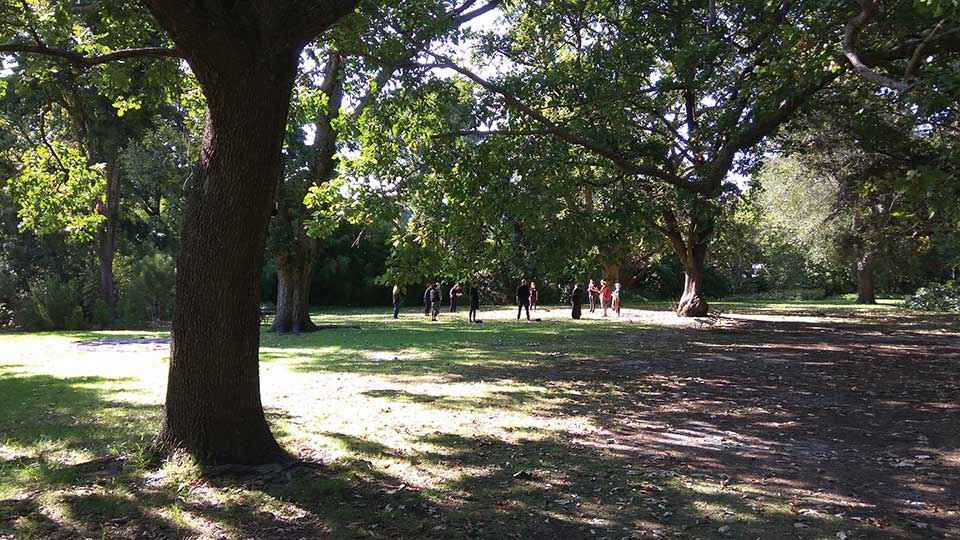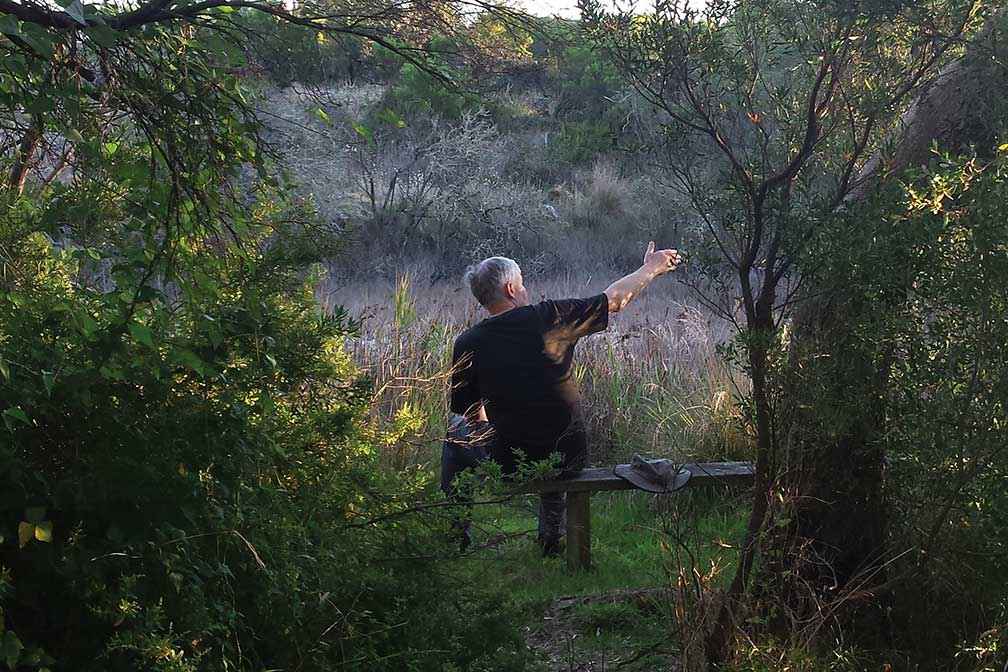Victorian Landcare Magazine - Winter 2019, Issue 75

Forest therapy was first introduced as a preventative public health practice under the name of Shinrin-yoku (meaning immersion in the forest) in Japan in 1983. Since then it has shown remarkable results in improving public health in the countries that have integrated it into their national health systems.
Forest therapy was first introduced as a preventative public health practice under the name of Shinrin-yoku (meaning immersion in the forest) in Japan in 1983. Since then it has shown remarkable results in improving public health in the countries that have integrated it into their national health systems.
On a forest therapy walk, participants are immersed in the healing properties of phytoncides, specific aerosols emitted from trees, which boost our immune systems.
According to Professor Qing Li from the International Nature and Forest Therapy Alliance (INFTA), a guided forest therapy walk should focus on all five senses.
“It should also involve some light physical activities, such as Qigong or gymnastics,” Professor Li said.
A certified forest therapy guide typically offers a set of activities over a three-hour walk which allow participants to engage with nature through their senses They slow down, tune out of stress and switch off from technology, allowing them to connect with nature. Guides are trained to help people with this act of slowing down and giving their attention to the sights, sounds and aromas of the forest.
For most people it is almost impossible to slow down without a guide. The feedback from every walk supports this claim. This is no surprise. Many people live stressed and hectic lives, and have forgotten how to really relax, enjoy silence or experience nature. As a result, lifestyle diseases are the leading cause of ill health in Australia.
Forest therapy guides offer sensory and creative activities as well as gentle physical exercises within the structured sequence of the forest therapy session. These activities are derived from the forest therapy curriculum, which was evaluated and validated by more than 120 experts from 20 countries in 2017.
Forest therapy also provides an element of freedom to engage in what feels good for the participant – even if that means finding a spot to relax and fall asleep for the rest
of the session.
Most forest therapy sessions conclude with a Japanese inspired tea ceremony featuring Australian bush tea. Guides take pride in this ceremony – presenting; it as an act of gratitude to nature and the participants.

Above: A sit spot exercise during a forest therapy walk at Coolart Wetlands and Homestead, February 2017.
The direct benefits of forest therapy include reduced blood pressure, lowered pulse rate, reduced stress hormone (cortisol) levels, reduced anxiety and depression, increased happiness and positive mood, enhanced energy levels and better concentration. Forest therapy has been associated with a surge in the activity of cancer and tumor fighting blood cells. Positive effects are also seen from exposure to anti-bacterial, anti-microbial, anti-fungal and anti-inflammatory substances emitted by trees and plants.
The indirect effects of forest therapy include increased overall fitness levels, improved immune system, better and more regular sleep, weight loss and reduced risk of obesity, reduced risk of heart and lung diseases, decrease in anxiety and depression, less likelihood of feeling stressed in typical day-to-day situations, fewer mood-swings, enhanced ability to focus, higher self-confidence and a more stable personality.
As well as health benefits, forest therapy has significant economic benefits. Forest therapy now contributes more than $US 2 billion per year to the GDP of South Korea. Significant investment into forest therapy infrastructure, training and research are being made in East Asia and Europe.
Victoria has many locations that are well suited for forest therapy. The Domino Trail, a former rail track at Trentham, is being considered for conversion as a dedicated forest therapy trail by Hepburn Shire Council. In 2018 Brimbank Council conducted a free, three-hour forest therapy event for its community.
The Royal Botanic Gardens are offering regular forest therapy walks in the Melbourne and Cranbourne Botanic Gardens.
Several dozen INFTA-certified forest therapy guides are currently being trained in Victoria. Several hundred guides will be needed to implement the public health approach of forest therapy in Victoria.
Dieter Kotte is Secretary of INFTA. Susan V Joachim is President of INFTA. INFTA is registered in Victoria as a not-for-profit association.
For more information: email info@infta.net